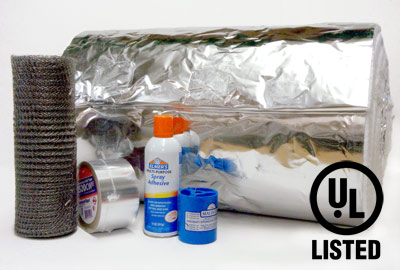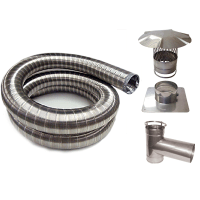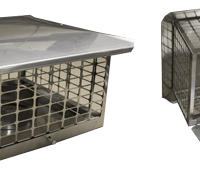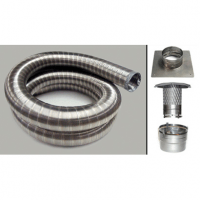Buy Chimney Liner Insulation Now
 What is Chimney Liner Insulation?
What is Chimney Liner Insulation?
Chimney liner insulation is a high temperature insulation that is designed specifically for metal chimney liners. If your chimney and the flue gases venting through it are able to cool down too much, the result will be the formation of creosote build-up in your chimney liner. Creosote is highly flammable and is the leading cause of chimney fires.
In addition to reducing chimney liner creosote build-up, it will also help maintain a better draft by keeping everything in the venting system warm since hot air rises.
Types of Chimney Liner Insulation
Pour-down mix: There are two types of chimney liner insulation available. The first is a pour-down mix. You simply mix in water and pour the mix around the installed chimney liner. This type of chimney liner insulation is a good method of insulating your chimney liner if you don’t plan on removing the liner later down the road. Because the chimney insulation mix hardens into place it can make it very difficult to remove the liner once its set.
Insulation Blanket: The other type of chimney liner insulation is a blanket wrap. It can withstand temperatures of up to 2100 degrees F. It’s very simple to install and remove from the chimney down the road if needed. Chimney liner insulation wrap comes in a kit consisting of the insulation, wire protective mesh, foil tape, glue, and stainless locking wire.
Do I need to insulate my chimney liner?
You are not required to insulate your chimney liner if you are venting gas or oil, though it is always recommended. It is required to maintain a UL listing when venting a unit that burns a solid fuel, such as wood or coal.
Click Here to buy Chimney Liner Insulation
Chimney liner insulation is also a safety issue when relining a chimney for a wood burning stove. It will keep creosote build-up down, and if there is a chimney fire it will also keep your home safe from the 2100 degree fire burning inside the liner.
If you have the room in your chimney flue you should always insulate your chimney liner. If you are burning wood it is required to maintain the U.L. listing of a chimney liner. If you do not have the room to insulate, please call Chimney Liner Depot and discuss your options. Please do not ignore insulation if you are installing a chimney liner for a wood burning stove.
Click here to view chimney liner insulation






